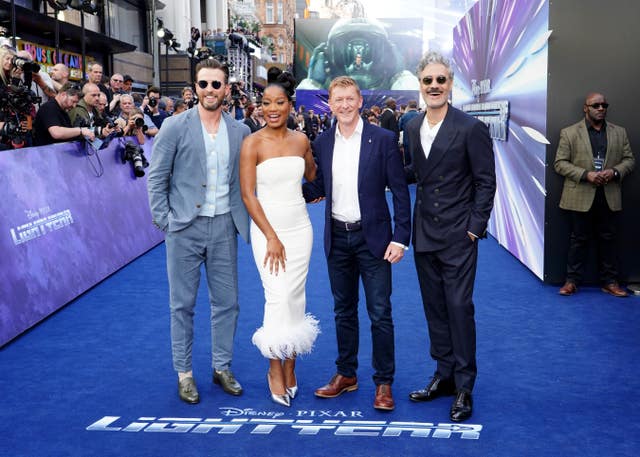Chris Evans has said the transition from playing Captain America to his new role of Buzz Lightyear in the forthcoming Toy Story spin-off was “intimidating”.
The Hollywood star voices the beloved space ranger in Pixar’s new animated movie Lightyear, due out in cinemas on Friday.
While Toy Story featured the toy version of Buzz, the new film will explore the “real-life” hero who inspired the character in the franchise.
Evans, who starred as Captain America in the Marvel Cinematic Universe, was celebrating his 41st birthday at the UK premiere of Lightyear in central London on Monday.
Reflecting on moving from one classic character to another, he told the PA news agency he found it “intimidating”.
He said: “Luckily with Captain America, you kind of learn what it feels like to take on a role that people have high expectations for and big shoes to fill.

“But more than anything, humbling that I was able to have the opportunity to be a part of such an amazing franchise.”
Evans said he initially found the role of Captain America more daunting as “there was so many people who had an idea of the character”.
He added: “I thought jumping that hurdle would be tall enough but now trying to fill these shoes is just as daunting.”

The Toy Story animated film franchise started in 1995, telling the story of a cowboy doll named Woody who feels threatened when the young boy who owns him, Andy, gets a new spaceman toy named Buzz Lightyear.
It became a blockbuster hit and was followed by three sequels in 1999, 2010 and 2019, with Tim Allen voicing Buzz in all four movies.
Evans said he saw the first movie as a child and that all four movies were “impactful” on him.
Directed by Angus MacLane, the new film also stars Taika Waititi and Keke Palmer.
New Zealand filmmaker and actor Waititi, who voices fellow space explorer Mo Morrison in the film, told PA that knowing Evans would be starring was a “big thing” which drew him to the project, “because we’re friends and I think he’s great and he can carry a movie like this”.
Waititi said a role in such a popular franchise made him “a little bit” nervous but this was eased by knowing Pixar was at the helm as it has worked across all the Toy Story films.
Giving ✨#BuzzLightyear✨ a moment to shine. Get your tickets to see Lightyear on the big screen this Friday. pic.twitter.com/cWMEFRBZCA
— Pixar's Lightyear (@PixarsLightyear) June 13, 2022
British astronaut Tim Peake, who consulted on the movie, said teaching children and young people about space is “really important” as there are many developments on the horizon.
He told PA: “We are going back to the moon in the next two or three years, and then on to Mars shortly after that, and people are going to start seeing humans walking again, on the surface of the moon, how exciting.
“So the Lightyear movie really emphasises that space ranger aspect – we’ve been seeing astronauts in low Earth orbit for so many years now, but we’re breaking out once again.
“So it’s a really inspirational movie, and young people watching this can think, ‘Wow, that’s what I’m going to do when I grow up’.”
Pixar’s Lightyear is out in cinemas on June 17.
